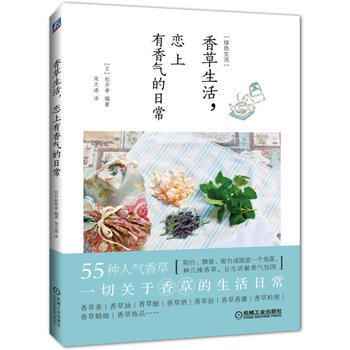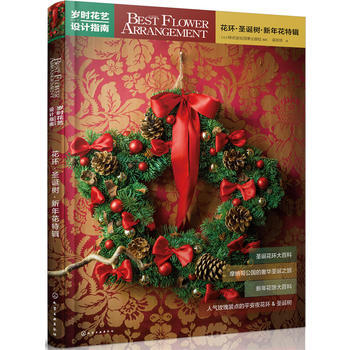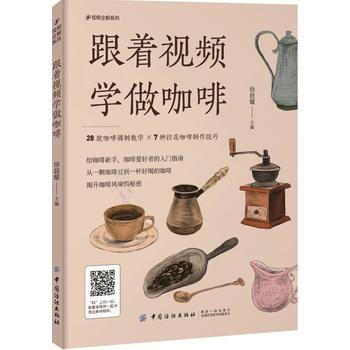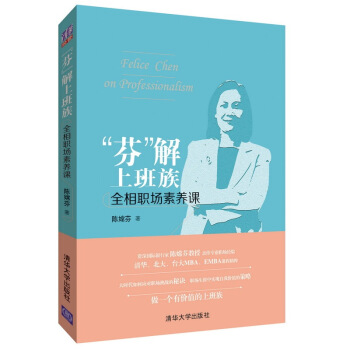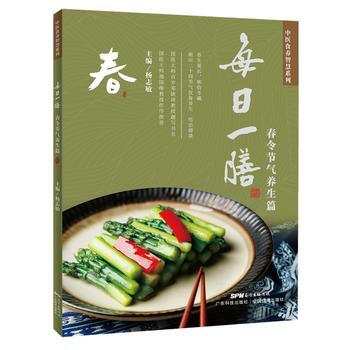具體描述
內容介紹
基本信息
| 書名: | 香草生活.戀上有香氣的日常 |
| 作者: | (日)鬆井孝 | 開本: | |
| YJ: | 29.8
| 頁數: | |
| 現價: | 見1;CY=CY部 | 齣版時間 | 2016-11 |
| 書號: | 9787111548676 | 印刷時間: | |
| 齣版社: | 機械工業齣版社 | 版次: | |
| 商品類型: | 正版圖書 | 印次: | |
內容提要 作者簡介 鬆井孝原為玉川大學教授。著有《在陽颱種植沙拉蔬菜》 《生活與園藝》 《從園藝開始學起來吧》《簡單的種菜教科書》 《容器種菜教科書》 《迷你&小型蔬菜的容器菜園》等多本書籍。 精彩導讀 目錄
Part1 欣賞、利用香草
享用香草茶
● 新鮮香草泡齣的香草茶
● 乾香草泡齣的香草茶
● 激情一夏!香草茶碰碰涼
● 按功效分類 香草推薦
香草醋與香草油
● 用於製作香草醋和香草油的香草
● 香草醋製成的西式泡菜
● 利用香草油增添風味
● 豐富多樣的香草油
● 香草油沙拉調料
新鮮香草製成的香草黃油
香草葡萄酒、香草啤酒、
利口酒
● 品味香草葡萄酒
● 透心涼的香草啤酒
● 香草利口酒
香草浴
● 暖身浴鹽
● 清香四溢的手工香皂
香草香囊(香袋)
香草手工藝品
● 迷迭香花環
時尚香草蠟燭
香草料理、香草甜點
● 用於燉菜的香料束
● 新鮮羅勒熱那亞風味調味醬
● 芝麻菜沙拉
● 香草嫩葉
● 民族風味菜肴必不可少的香草、芫荽
● 薄荷冰淇淋和薄荷冰沙
盆栽、花圃、花壇
Part2 培育香草的好方法
容易培育的香草
● 在小花盆裏也能茁壯生長的香草
● 香草混栽
● 種植在庭院裏,不需耗費精力管理的香草
準備物品
● 花盆或花木箱
● 香草花土
● 鐵鍬、剪刀、噴壺等
● 肥料
從秧苗開始培育
● 購買秧苗
● 秧苗的移植
從種子開始培育
● 購買種子和播種時期
● 播種方法
● 定植
香草的管理要點
● 花盆、花木箱的放置地方
● 澆水
● 肥料
● 夏季管理
● 鼕季管理
● 移栽、芽插、實生苗等
收獲和保存
● 在需要時收獲
● 一次性收獲保存
● 乾燥保存
● 其他保存方法
● 種子的收獲和保存
Part3 55 種人氣香草
適閤傢庭培育的41 種香草
● 意大利香芹
● 橄欖
● 牛至
● 洋甘菊
● 貓薄荷
● 葛縷子
● 香石竹
● 矢車菊
● 芫荽
● 番紅花
● 香蒲
● 甜菊
● 鼠尾草(普通鼠尾草)
● 天竺葵
● 酸模
● 百裏香
● 龍蒿
● 雪維菜
● 蝦夷蔥
● 蒔蘿
● 旱金蓮
14 種其他香草
● 蕃拉蘆薈
● 大蒜
● 公丁香
● 刺山柑
● 艷山薑
● 薑
● 魚腥草
● 羅勒
● 薔薇
● 海索草
● 小白菊
● 茴香
● 月桂
● 南美天芥菜
● 金盞花
● 琉璃苣
● 墨角蘭
● 歐錦葵
● 美國薄荷
● 薄荷
● 薰衣草
● 芝麻菜
● 檸檬草
● 檸檬馬鞭草
● 香蜂花
● 迷迭香
● 野草莓
● 西洋蒲公英
● 肉豆蔻
● 啤酒花
● 蘘荷
● 蕓香
● 波葉大黃
● 洛神葵
暫時沒有目錄,請見諒!
香草生活·戀上有香氣的日常 一、 Preface: A Whisper of the Earth's Embrace In a world often rushing, where the hurried rhythm of modern life can sometimes drown out the subtler melodies of existence, there exists a yearning for connection, for grounding, for a return to the elemental. This book is an invitation to embark on such a journey, not to a faraway land or an imaginary realm, but to the very heart of our everyday lives, infused with the fragrant spirit of the earth. It is a tribute to the humble yet profound power of botanicals, the silent sentinels of nature that have graced human existence for millennia, shaping our cultures, healing our bodies, and nurturing our souls. "香草生活·戀上有香氣的日常" is more than just a collection of facts about herbs; it is a curated experience, a gentle unfolding of sensory delights and practical wisdom. It seeks to reawaken our senses to the world around us, to the subtle aromas that dance on the breeze, the vibrant hues that paint our landscapes, and the delicate textures that whisper tales of resilience and growth. It is about rediscovering the intimate dance between humanity and the plant kingdom, a relationship as old as time itself, yet one that we often overlook in our pursuit of the manufactured and the ephemeral. Within these pages, you will find no grand pronouncements or revolutionary theories. Instead, you will encounter a quiet celebration of the ordinary, transformed into the extraordinary through the lens of fragrant herbs. It is a call to slow down, to breathe deeply, and to appreciate the simple yet potent magic that nature generously offers. From the invigorating zest of citrus to the calming embrace of lavender, from the grounding aroma of rosemary to the sweet allure of mint, each herb holds within it a universe of stories, of medicinal properties, of culinary possibilities, and of profound aesthetic appeal. This book is designed to be a companion, a guide, and a source of inspiration for anyone who wishes to weave a little more fragrance, a little more nature, and a little more mindful presence into their daily routines. It is for the curious novice eager to explore the vast world of herbs, the seasoned enthusiast seeking new perspectives, and anyone who simply finds solace and joy in the embrace of the natural world. Prepare to be enchanted, to be nourished, and to fall in love with the aromatic tapestry of life. II. Chapter 1: The Alchemy of Aroma: Unlocking Nature's Perfumed Treasury The very essence of "香草生活·戀上有香氣的日常" lies in the transformative power of scent. Aroma is not merely a fleeting sensation; it is a potent gateway to our memories, our emotions, and our well-being. This chapter delves into the fascinating world of botanical fragrances, exploring how they are created, how they affect us, and how we can harness their benefits to enrich our lives. We begin by understanding the fundamental building blocks of these captivating scents: essential oils. These concentrated aromatic compounds, extracted from various parts of plants – leaves, flowers, stems, roots, and seeds – are the concentrated essence of their botanical source. We will explore the diverse methods of extraction, from steam distillation, a time-honored technique that gently coaxes out the volatile oils, to cold pressing, which is ideal for citrus rinds, preserving their bright, zesty notes. The meticulous and often delicate processes involved in obtaining these precious essences underscore their value and the artistry inherent in their production. Beyond the science, we delve into the profound psychological and physiological effects of aromas. The limbic system, the part of our brain responsible for emotions, memory, and instinct, is directly linked to our sense of smell. This intimate connection means that certain scents can instantly evoke feelings of calm, invigorate our minds, uplift our spirits, or even transport us back to cherished moments. We will explore the scientific underpinnings of this phenomenon, understanding how specific molecules interact with our olfactory receptors and trigger a cascade of responses within our nervous system. Consider the immediate calming effect of lavender after a stressful day. This is not merely a placebo; it is the result of specific chemical compounds in lavender interacting with our brain's receptors, promoting relaxation. Similarly, the invigorating burst of citrus can awaken our senses and improve focus, while the earthy aroma of sandalwood can foster a sense of grounding and mindfulness. This chapter aims to demystify these effects, providing a deeper appreciation for the natural pharmacopoeia of scent. We will also explore the concept of "olfactory fatigue," the phenomenon where prolonged exposure to a single scent diminishes its perceived intensity. This understanding is crucial for appreciating the nuances of different fragrances and for layering scents effectively, preventing sensory overload and ensuring a sustained sensory experience. It encourages a thoughtful and deliberate approach to incorporating aromatic elements into our lives, rather than simply dousing ourselves in a single, overwhelming fragrance. Furthermore, this chapter lays the groundwork for understanding the diverse applications of these fragrant treasures. From creating personalized perfumes that reflect our unique personalities to crafting natural cleaning solutions that imbue our homes with fresh, clean scents, the possibilities are as varied as the herbs themselves. We will touch upon the ethical considerations of sourcing essential oils, emphasizing the importance of sustainable practices and supporting responsible cultivation, ensuring that the beauty we extract from nature does not come at its expense. This initial exploration sets the stage for a deeper dive into the specific herbs and their myriad applications throughout the book, igniting a curiosity and an appreciation for the perfumed gifts that the earth bestows upon us. III. Chapter 2: The Aromatic Garden: Cultivating Your Own Fragrant Sanctuary The journey into "香草生活·戀上有香氣的日常" truly blossoms when we embrace the act of cultivation. This chapter invites you to create your own fragrant sanctuary, whether it be a sprawling garden, a collection of potted herbs on a sunny windowsill, or even a simple herb patch on a balcony. The act of nurturing plants from seed to harvest is a deeply rewarding experience, fostering a tangible connection to the earth and its cycles. We begin with the foundational principles of herb gardening. Understanding the specific needs of each herb – its preferred sunlight, soil type, and watering regimen – is paramount. This chapter will guide you through selecting the right herbs for your climate and space, offering insights into the most popular and versatile varieties, from the ever-reliable basil and mint to the sun-loving rosemary and thyme. We will discuss the benefits of companion planting, where certain herbs can deter pests and enhance the growth of their neighbors, creating a harmonious and thriving ecosystem. The process of preparing the soil is also crucial. We will explore different soil compositions, the importance of good drainage, and the benefits of incorporating organic matter to nourish your plants. For those with limited space, we will delve into the art of container gardening, offering tips on selecting appropriate pots, understanding soil mixes for containers, and managing watering needs to prevent both over and under-watering, which can be particularly challenging in potted environments. When it comes to planting, we will distinguish between sowing seeds directly into the ground, starting seedlings indoors, and transplanting established plants. Each method has its advantages, and understanding them will help you achieve success in establishing your herb garden. We will also discuss the optimal times for planting, taking into account seasonal changes and the specific growth habits of different herbs. The ongoing care of your aromatic garden is as important as its establishment. This chapter will provide practical advice on watering, fertilization (emphasizing natural and organic methods), and pest and disease management. We will explore organic solutions for common garden woes, such as using neem oil to deter insects or creating homemade compost to enrich the soil, minimizing the need for chemical interventions and ensuring the purity of your homegrown herbs. Pruning and harvesting are perhaps the most rewarding aspects of herb cultivation. We will learn the best techniques for harvesting herbs to encourage continued growth and maximize their aromatic potency. Understanding when and how to prune different herbs will ensure healthy, vigorous plants and a continuous supply of fresh ingredients and fragrant foliage. We will also discuss the art of drying and preserving your harvest, whether through air-drying, oven-drying, or freeze-drying, ensuring that the fragrance and flavor of your herbs can be enjoyed long after the growing season has ended. Beyond the practicalities, this chapter aims to instill a sense of mindfulness and connection in your gardening endeavors. The act of tending to your plants, observing their growth, and engaging with the natural world is a form of therapy, a respite from the demands of everyday life. It is about embracing patience, celebrating small victories, and fostering a deep appreciation for the life-sustaining power of the earth. Your aromatic garden will become a living testament to your connection with nature, a source of fresh flavors, soothing scents, and profound personal fulfillment. IV. Chapter 3: The Culinary Canvas: Infusing Everyday Meals with Herbal Enchantment The kitchen is a natural extension of the fragrant garden, and this chapter explores the transformative power of herbs in elevating everyday culinary experiences. "香草生活·戀上有香氣的日常" believes that cooking with herbs is an art form, a way to infuse dishes with vibrant flavors, intoxicating aromas, and a touch of natural wellness. We begin by understanding the fundamental flavor profiles of common culinary herbs. From the bright, peppery notes of arugula and watercress to the warm, earthy tones of sage and thyme, each herb brings a unique character to a dish. We will categorize herbs by their primary flavor contributions – for example, those that add freshness and zest (mint, lemon balm), those that provide warmth and depth (rosemary, oregano), and those that offer subtle sweetness (basil, tarragon). This understanding will empower you to make informed choices when selecting herbs for specific recipes. This chapter will guide you through the art of pairing herbs with ingredients. We will explore classic combinations, such as rosemary with lamb, basil with tomatoes, and mint with peas, but also encourage experimentation. The principles of flavor balancing will be discussed – how to use herbs to complement, contrast, or enhance the other flavors in a dish. We will delve into the concept of "terroir," understanding how the origin and growing conditions of an herb can influence its flavor, encouraging you to seek out fresh, seasonal, and locally sourced herbs whenever possible. The method of incorporating herbs into your cooking is also crucial. We will differentiate between adding fresh herbs at the beginning of cooking, which allows their flavors to meld and deepen, and adding them towards the end, preserving their delicate aroma and vibrant essence. We will also explore the use of dried herbs, understanding that their flavor is more concentrated and often requires rehydration or a longer cooking time. Techniques such as "bouquet garni" and "herb bundles" will be explained, showcasing ways to infuse broths, stocks, and stews with layered herbal notes. This chapter will also introduce you to a variety of simple yet exquisite recipes, showcasing the versatility of herbs in various culinary applications. Imagine a refreshing cucumber and mint salad, a hearty lentil soup infused with rosemary and thyme, or a vibrant pesto bursting with fresh basil. We will provide recipes for marinades, sauces, dressings, and even herbal teas, demonstrating how herbs can add a healthful and flavorful dimension to every meal. Furthermore, we will touch upon the medicinal properties of culinary herbs, highlighting how their regular consumption can contribute to overall well-being. The anti-inflammatory properties of ginger and turmeric, the digestive benefits of peppermint, and the antioxidant power of oregano are just a few examples of how incorporating these herbs into your diet can offer subtle yet significant health advantages. This chapter encourages a holistic approach to food, where flavor, aroma, and nourishment converge. The joy of cooking with fresh herbs lies in their ability to transform the mundane into the magnificent. It is about engaging all your senses, about creating dishes that are not only delicious but also visually appealing and aromatically captivating. "香草生活·戀上有香氣的日常" believes that the kitchen can be your personal aromatic canvas, where every meal becomes an opportunity to celebrate the vibrant, fragrant gifts of nature. V. Chapter 4: The Soothing Elixir: Herbs for Wellness and Self-Care The journey of "香草生活·戀上有香氣的日常" extends beyond the plate and into the realm of personal well-being. This chapter delves into the profound therapeutic benefits of herbs, exploring their role in promoting relaxation, alleviating common ailments, and nurturing our overall health. For centuries, cultures around the world have turned to the natural world for healing and comfort, and this chapter aims to reintroduce you to this time-honored wisdom. We begin by understanding the principle of herbalism – the practice of using plants for medicinal purposes. This is not about advocating for self-diagnosis or replacing conventional medical treatment, but rather about empowering individuals with knowledge of gentle, natural remedies that can support their health and well-being. We will emphasize the importance of consulting with qualified healthcare professionals for serious medical conditions. This chapter will explore a selection of herbs renowned for their therapeutic properties, focusing on those that are readily accessible and safe for general use. We will delve into the calming virtues of chamomile, often used to promote sleep and ease digestive discomfort. The nervine properties of valerian root and passionflower will be discussed for their ability to soothe anxiety and promote relaxation. We will also explore the immune-boosting power of echinacea and elderberry, and the digestive aids of ginger and fennel. The methods of preparing and consuming herbal remedies will be thoroughly explained. We will cover the art of making herbal infusions (teas), decoctions, tinctures, and poultices. Each method is suited for different types of herbs and ailments, and understanding these distinctions will allow you to create effective and potent remedies. For example, delicate floral parts are best suited for infusions, while tougher roots and barks require decoctions to extract their medicinal compounds. We will also explore the role of herbs in creating a sanctuary of self-care. Imagine a warm bath infused with lavender and Epsom salts to soothe tired muscles and calm the mind. Or the creation of calming herbal compress for minor skin irritations. The use of aromatic essential oils in diffusers or massage blends can also contribute significantly to emotional and physical well-being, promoting a sense of balance and rejuvenation. This chapter will also touch upon the importance of "synergy" in herbalism – the concept that the combined effect of multiple herbs can be greater than the sum of their individual parts. We will explore simple herbal synergy blends for common needs, such as stress relief or improved sleep, providing guidance on selecting compatible herbs and understanding their collective properties. The practice of mindful herb usage is central to this chapter. It is about approaching these natural remedies with respect and understanding, recognizing the delicate balance of nature, and using these gifts responsibly. By integrating herbs into our self-care routines, we can cultivate a deeper connection with our bodies, foster resilience, and embrace a more holistic approach to wellness. "香草生活·戀上有香氣的日常" believes that nature offers an abundance of gentle solutions to support our journey towards a healthier, more balanced, and more fragrant life. VI. Chapter 5: The Aromatic Home: Crafting Fragrant Living Spaces The essence of "香草生活·戀上有香氣的日常" permeates every corner of our lives, and this chapter explores how to infuse our living spaces with the natural beauty and soothing aromas of herbs. Our homes should be havens of comfort and tranquility, and herbs offer a natural and effective way to enhance their ambiance, purify the air, and promote a sense of well-being within our personal sanctuaries. We begin by understanding the dual role of herbs in creating an aromatic home: their aesthetic appeal and their functional benefits. Beyond their visual charm, many herbs possess natural air-purifying qualities, helping to neutralize odors and create a fresher, cleaner environment. We will explore how to select herbs that are not only visually pleasing but also contribute positively to the air quality and olfactory experience of your home. The art of using fresh herbs for home fragrance is a central theme. This includes strategically placing potted herbs in different rooms, allowing their subtle scents to naturally perfume the air. We will discuss the best locations for specific herbs – for instance, placing a fragrant mint plant near the kitchen to combat cooking odors, or a calming lavender plant in the bedroom to promote relaxation. The visual appeal of potted herbs also adds a touch of natural beauty and vibrancy to interior décor, bringing the outdoors in. Beyond fresh plants, we delve into the creation of homemade herbal potpourri and sachets. This is a wonderful way to preserve the fragrance of dried herbs and flowers, offering a long-lasting and customizable scent experience. We will provide guidance on selecting complementary herbs and flowers, understanding how to dry them properly to retain their aromatic qualities, and creating beautiful and fragrant blends for drawers, closets, and living areas. Imagine the soothing scent of dried lavender and rose petals filling your linen cupboard, or a refreshing blend of citrus peels and rosemary for your entryway. This chapter will also explore the creation of natural herbal cleaning solutions. Say goodbye to harsh chemical cleaners and embrace the power of herbs to cleanse and refresh your home. We will provide recipes for all-purpose cleaners infused with the antibacterial properties of thyme and tea tree oil, window cleaners that leave a streak-free shine and a subtle citrus aroma, and floor cleaners that imbue your home with the grounding scent of pine or eucalyptus. These natural alternatives are not only environmentally friendly but also contribute to a healthier indoor atmosphere, free from synthetic fragrances and harsh chemicals. The use of essential oils for home fragrance will also be explored, emphasizing safe and responsible practices. We will discuss the benefits of using essential oil diffusers to create custom scent blends that cater to specific moods or needs. Whether you seek to invigorate your space with uplifting citrus oils, promote relaxation with calming lavender and chamomile, or create a grounding atmosphere with earthy cedarwood and sandalwood, essential oils offer a versatile and potent way to personalize your home's aroma. We will also offer guidance on selecting high-quality, pure essential oils and discuss appropriate dilution ratios for different applications. Furthermore, this chapter will touch upon the concept of creating sensory experiences within your home. This could involve the gentle rustling of dried herbs in a decorative bowl, the visual appeal of a herb garden displayed on a windowsill, or the subtle, lingering scent of a homemade herbal cleaning solution. It is about consciously weaving the elements of nature and fragrance into the fabric of your daily life, transforming your home into a welcoming, nurturing, and truly aromatic sanctuary. "香草生活·戀上有香氣的日常" believes that by embracing the power of herbs, you can cultivate a living space that not only looks beautiful but also smells divine and nourishes your well-being. VII. Conclusion: The Enduring Scent of Connection As we reach the culmination of our exploration in "香草生活·戀上有香氣的日常," it becomes evident that the embrace of fragrant herbs is far more than a trend; it is a conscious choice to reconnect with the elemental, to cultivate a deeper appreciation for the natural world, and to infuse our everyday lives with a richness that transcends the superficial. This book has sought to be a gentle guide, a humble companion, and a source of inspiration for those who wish to weave the magic of botanicals into the tapestry of their existence. We have journeyed through the fascinating world of botanical aromas, uncovering the science behind their enchanting scents and their profound impact on our emotions and well-being. We have delved into the rewarding practice of cultivating our own fragrant sanctuaries, fostering a tangible connection to the earth and its cycles. The kitchen has been transformed into a culinary canvas, where herbs bring vibrancy, flavor, and nourishment to our meals. We have explored the soothing elixir of herbs for personal wellness and self-care, recognizing their gentle yet powerful ability to support our health and promote balance. And finally, we have learned to transform our living spaces into aromatic havens, where the natural beauty and fresh scents of herbs create an atmosphere of tranquility and rejuvenation. The overarching message that echoes through these pages is the enduring power of connection. It is a connection to the earth, from which these fragrant gifts emerge. It is a connection to ourselves, as we nurture our bodies, minds, and spirits with the bounty of nature. And it is a connection to each other, as we share the joy of growing, cooking, and living a life infused with the simple yet profound pleasures that herbs offer. "香草生活·戀上有香氣的日常" is an invitation to continue this journey, to keep exploring, experimenting, and discovering new ways to embrace the aromatic magic that surrounds us. It is about making conscious choices that align with a more natural, mindful, and fragrant way of living. Whether it’s the simple act of brewing a cup of herbal tea, tending to a pot of basil on your windowsill, or using a homemade herbal cleaner, each small step contributes to a larger tapestry of a life lived in harmony with nature. The scent of herbs is a reminder of our innate connection to the natural world, a whisper of resilience, beauty, and healing that has sustained humanity for millennia. May this book serve as a catalyst for you to cultivate your own "香草生活," to fall in love with the fragrant moments that enrich your daily routine, and to discover the enduring scent of connection that nature so generously provides. The aromatic journey is a continuous one, and its rewards are as boundless as the natural world itself.
